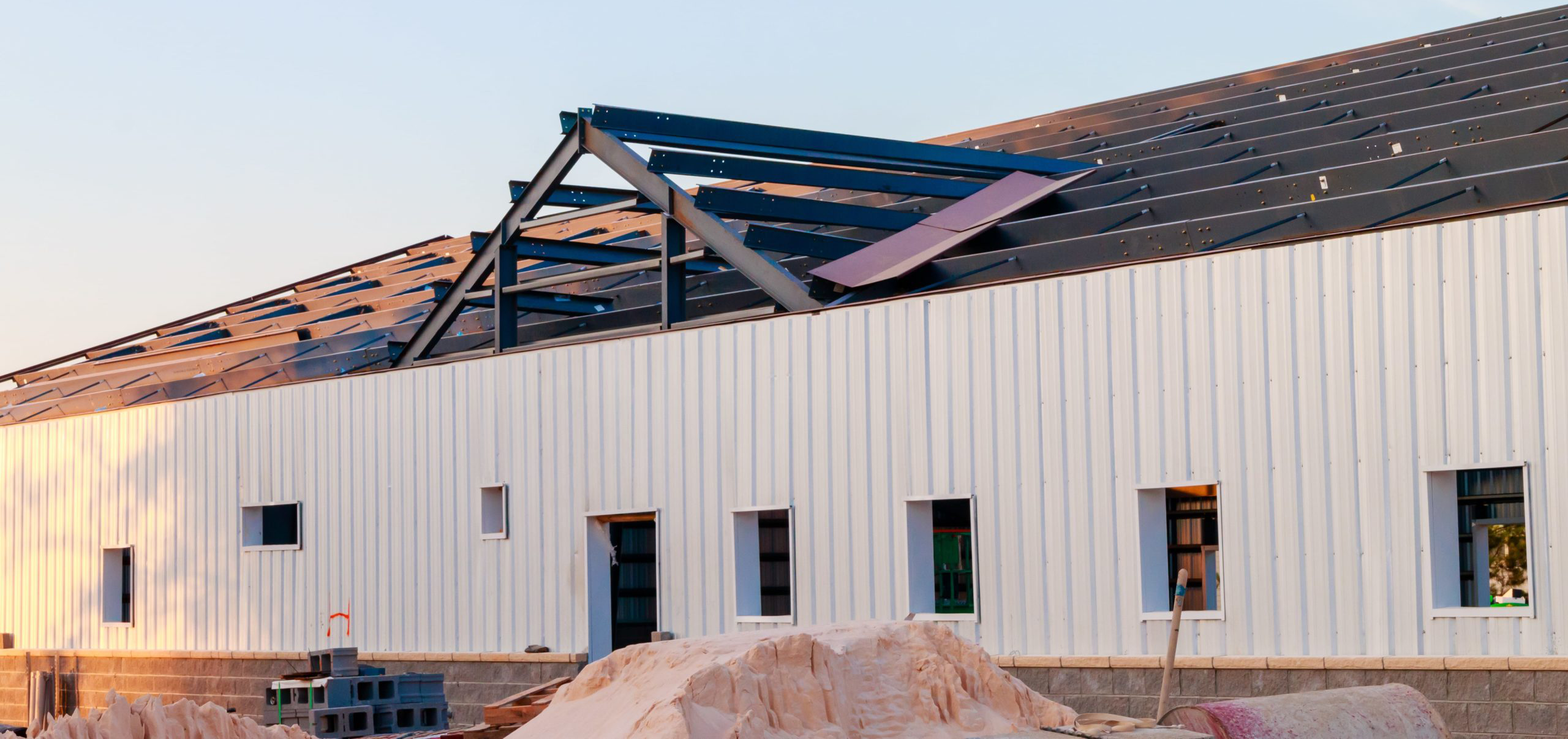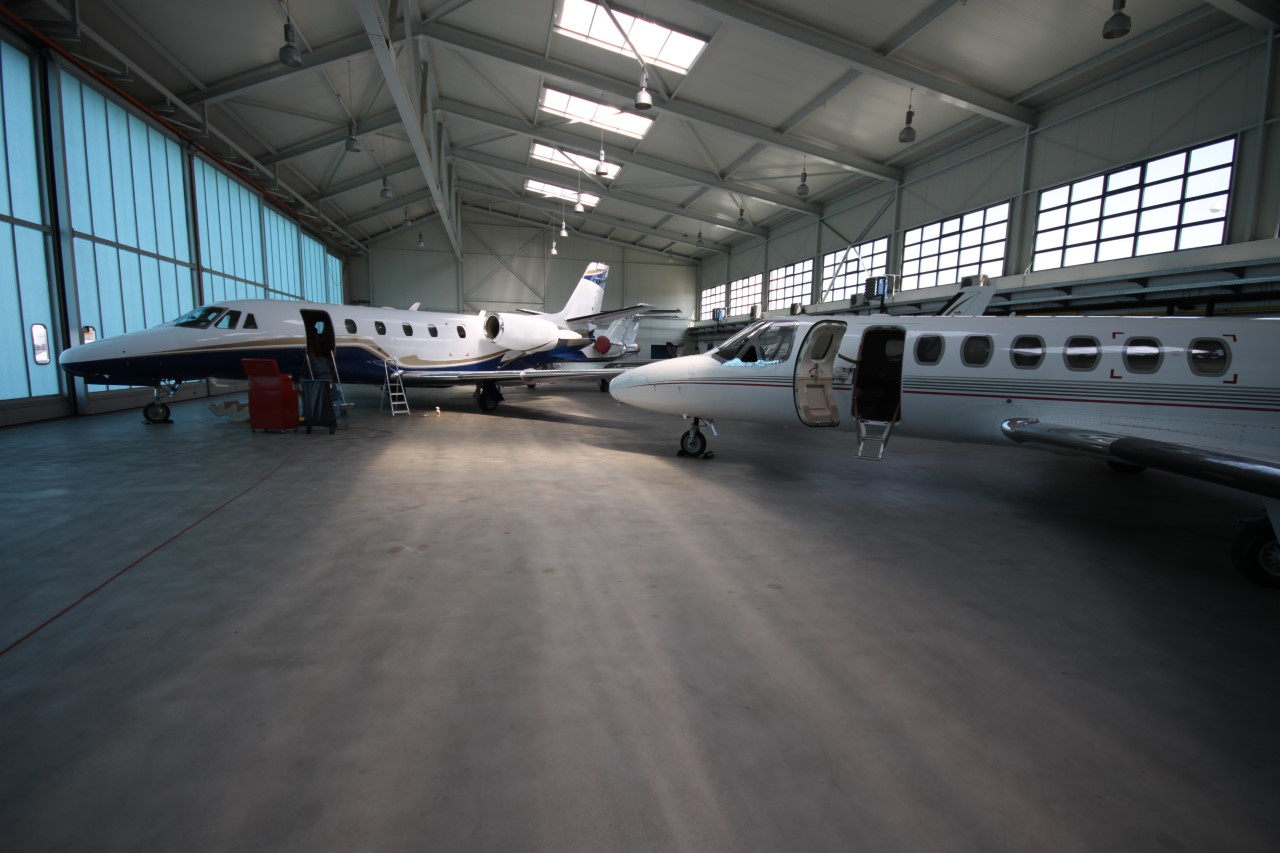
Steel Aircraft Hangars: Why Rent a Hangar When You Can Build Your Own?

Owning and maintaining airplanes, helicopters, or other flying machines is a constant process of checking and double-checking the viability of the aircraft. Flying is a serious endeavor; most pilots and crews work hard to keep their machines in the best possible conditions.
When storing an aircraft, having a well-constructed hangar is necessary. Protecting the aircraft(s) and the associated tools and machinery is as essential to overall success as is the pre-flight checklist. Building your own steel aircraft hangar, instead of renting, offers even more advantages for aircraft owners.
Why Own a Steel Aircraft Hangar?
Deciding to own rather than rent can be a decisive step towards developing a personal passion project or career. Renting may save money in the short term, but owning a steel hangar builds equity.
With the superior durability of steel, customers can also be assured that their purchase will maintain value. Equally, maintenance for a steel hangar is relatively simple, as the buildings are easy to clean and show minimal degradation over time.
Ownership also controls the building design, interior configuration, and numerous possibilities for space utilization. These buildings can also be seen as investments for future opportunities, as they’re durable with multiple uses.
The Top Six Benefits of Steel Aircraft Hangars
Owning a steel aircraft hangar is a wise safety, durability, and affordability decision. Steel hangars are strong, long-lasting, and can be configured to several interior designs.
Once the hangar is constructed, the possibilities for storage, multi-functional workspaces, and security are also increased. Steel hangars also offer excellent protection from the sun and elements, which can damage and degrade aircraft over time.
- Protective Shield Against the Elements
One of the top reasons for constructing a steel hangar is the protection from the sun and the elements it provides. Especially when considering how aircraft should be in the best possible shape to fly, a hangar is a wise investment for improving the longevity and functionality of the machines.
- Strong and Defensive Outside Layer
Steel offers strength and durability unmatched by other materials. Combined with certain coatings or paints on their surface, steel airplane hangars pose a formidable defense against external conditions making their way through.
- Adequate Spacing with Customization
Steel aircraft hangars can be built in various sizes and dimensions and are fully customizable. Starting with the exterior and sizes of door openings – to the interior shelving and workspace layouts, each aspect of the planning can be unique to your needs. Always work with a professional to design the appropriate floorplan, structure, and interior.
- Longevity and Durability that Lasts for Years
Since the hangars are constructed of high-quality steel, the building’s longevity will also eclipse many other materials. Wood, for instance, can be a cost-effective choice. However, in many areas of the country, termites may be the reason to choose steel over wood.
Investing in a steel structure is a wise move for protecting your business or personal assets.
- Resistant to Extreme Weather and Fire
Steel is corrosion-resistant and perfect for areas in contact with greater concentrations of extreme elements, such as beaches or deserts. Storms can also bring rain, wind, and other corrosive elements, possibly even unusual and damaging precipitation like hail. Because steel is so durable and damage-resistant, clients can rest assured that they’ll receive high protection, no matter the conditions.
Steel buildings are also fire-resistant. Having little to no flammable materials involved in the construction means steel buildings are unlikely to catch fire or sustain structural damage from a small to medium fire. Both factors are significant when planning for storing and protecting high-dollar property, such as airplanes and jets.
- Low Carbon Footprint Through Energy Efficiency
As our populations continue to produce more people and growing energy concerns, we must think more about the energy usage and longevity of the new structures we’re building. Becoming energy efficient is necessary to reduce the raw materials we need.
Reducing energy and material usage also helps to reduce a carbon footprint. Steel structures achieve both goals by offering a product that lasts longer and requires minimal maintenance. Steel buildings are also energy efficient in resisting more sun rays and, with proper insulation, require less energy for heating and cooling.
How Do You Choose the Right Size and Design for Your Hangar?
Like many decisions, the correct hangar configuration and building size depend on the vision and demands of the owner. Knowing what the space will be used for, both short and long-term, should be the first conversation between the owner, designer, and builder.
It’s best to develop some clarity on how the space will be used to offer directions for functionality in the design process effectively. This should also open up numerous other conversations about design choices, both small and large. Some typical decisions will include:
- How Many Aircraft? It’s probably wise to consider the overall space needed based on how many aircraft and machine types will find a home in the hangar. This will also be a time to consider how the hangar dimensions will be divided into work areas, storage space, and other rooms for offices or communal spaces.
- Floor Coating and Material Whether bare concrete or a highly polished and waxed finish, the floor type and surfacing should be a necessary conversation. For aircraft storage, it’s essential to consider flooring which can resist chemicals, gasoline, oils, and other substances used for maintenance and flights. Flooring can also be rated for electrostatic properties, bond and tensile strength, skid resistance, and resistance to moisture, scuffs, and staining. Consult with a steel structure professional or their associated flooring companies to determine which choice is right for you and your aircraft’s needs.
- Hangar Doors and Windows Choosing between sliding, bi-folding, or vertical-lifting doors can also be critical for the type of aircraft being stored. How long is the wingspan? What kind of height considerations are necessary? Doors can also operate as hydraulic or manual for lifting or sliding open. Windows can equally be ordered and installed to fit a variety of uses and needs.
- Proper Ventilation Whether venting exhaust or fuel fumes, adequate ventilation is necessary for more than a few safety concerns. Steel aircraft hangars can be built with high ceilings and fans to help with ventilation or may even feature motorized skylights or sliding roof designs.
- Lighting and Electrical Systems Proper lighting and an electrical system that can handle numerous tools and electrical devices simultaneously is also critical decision. For instance, lighting is essential during maintenance to detect flaws or problems with an aircraft’s construction. Using multiple electric machines without causing breaker box issues is also necessary to operate safely.
- Room to Expand If possible, plan for expansion and growth in the future. Think about how best to use the space to give options for adding another building or constructing an addition to an existing one.
What Type of Aircraft Can You Store in a Steel Aircraft Building?
Virtually any kind of aircraft, including helicopters, prop engine airplanes, jet engine airplanes, gliders, ultralights, and various types of equipment, fuels, and certain solvents necessary for the maintenance and operation of the aircraft, can be stored in a steel hangar. This is why determining what will be stored in the hangar before construction begins is essential.
What Other Considerations Should be Made When Building an Airplane Hangar?
Building Location
How close is the building to an airport? Is reliable infrastructure available, including roads, water and sewer, fire hydrants, and utilities? Will there be any concerns about the delivery of the materials?
Type of Land
Does the land flood during rain, or is there adequate drainage? Is the surrounding land in use or zoned commercial or residential? What are other buildings near the construction site?
Foundation Concerns
Building a strong steel aircraft hangar will depend significantly on the foundation of the building. An engineered foundation will consider the land being built on and what foundational materials or procedures will yield the best results.
How Much Does it Cost to Construct an Aircraft Hangar Made of Steel?
The cost of each steel building model Coastal Steel Structures offers varies on the configuration of the building. We offer a wide variety of models and full customization. Contact our professionals to start building a quote based on customer-specific needs.
Invest in a Business Known for Providing and Installing Top-Notch Aircraft Hangars!
As a proud A+ rated company with the Better Business Bureau, we work closely with our customers to offer the best quality steel structures on the market. Using I-beam and cold-formed steel, we can provide superior strength and weathering resistance for all our steel structures.
LETS WORK TOGETHER ON YOUR DREAMS!
Are you ready to start your steel building journey? Request a quote today and speak to one of our experienced team members to set you up for success and make your vision a reality!
GET A QUOTE